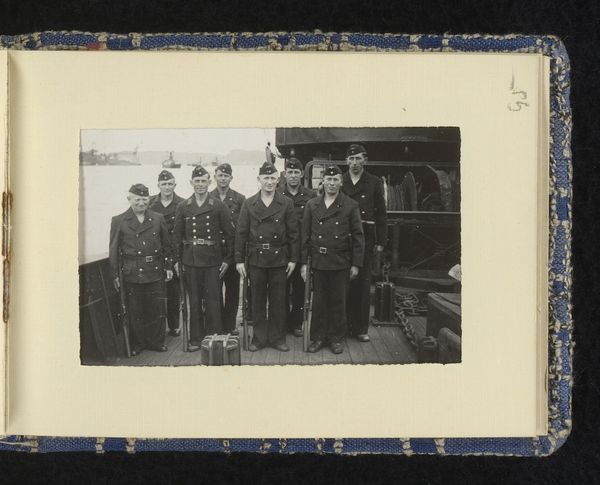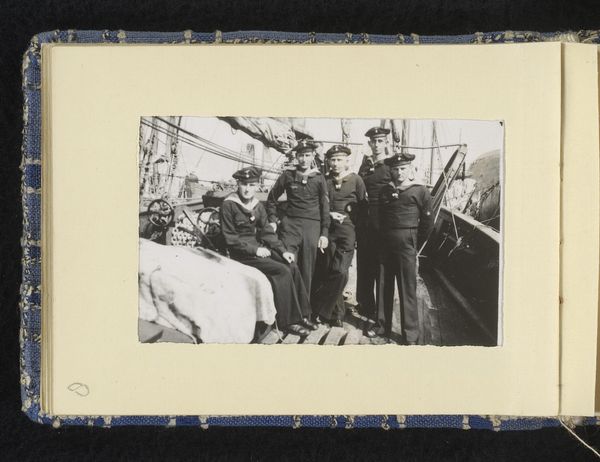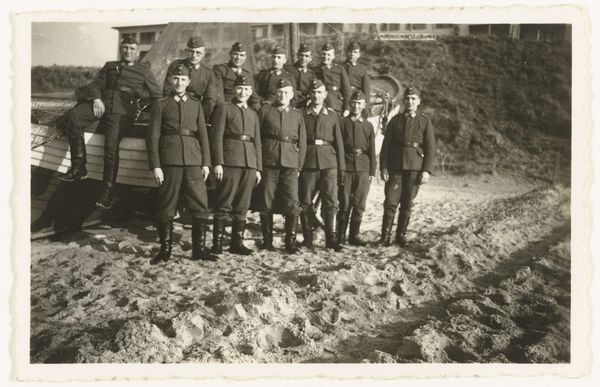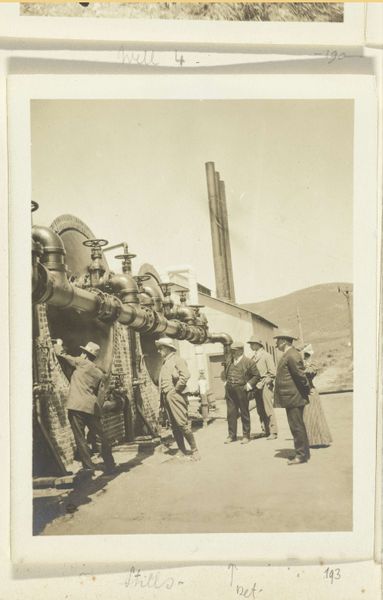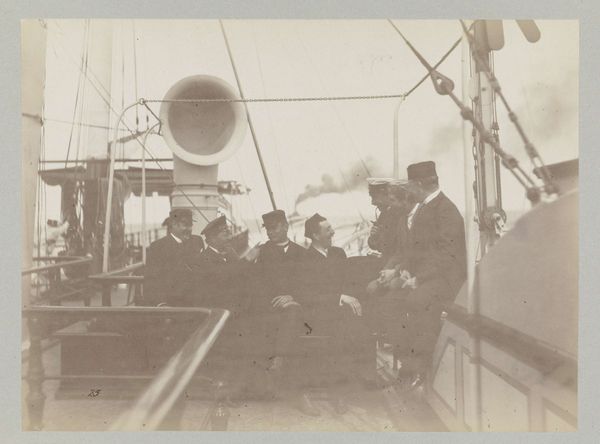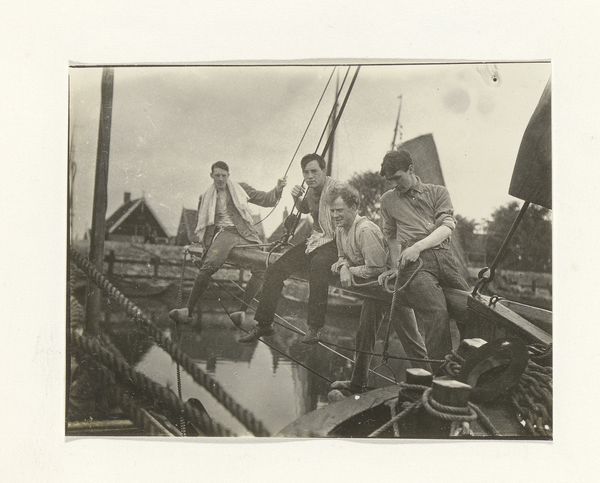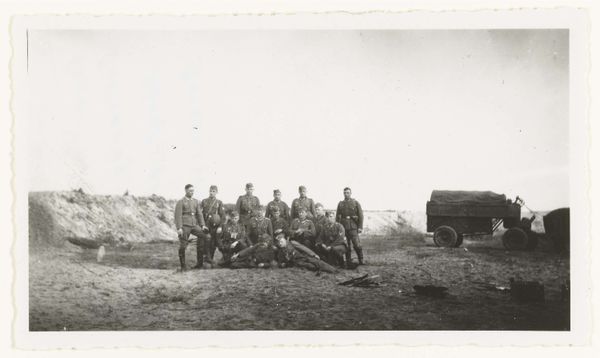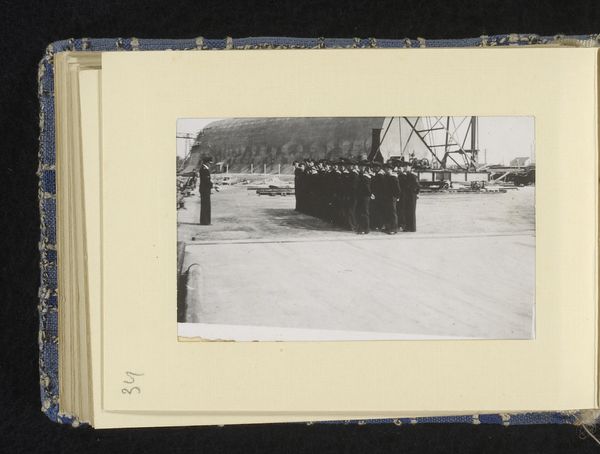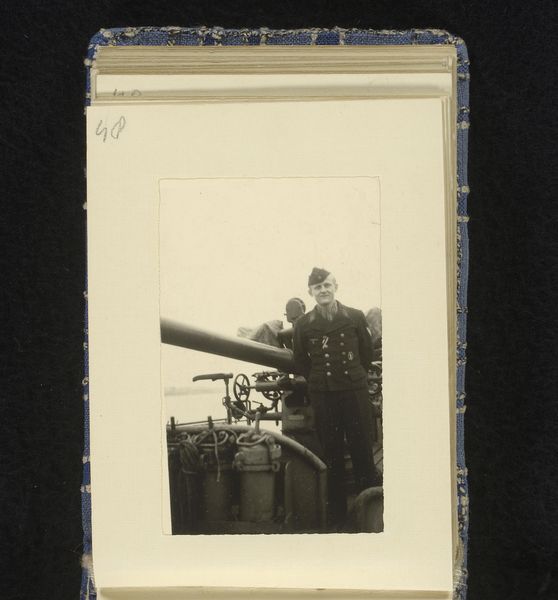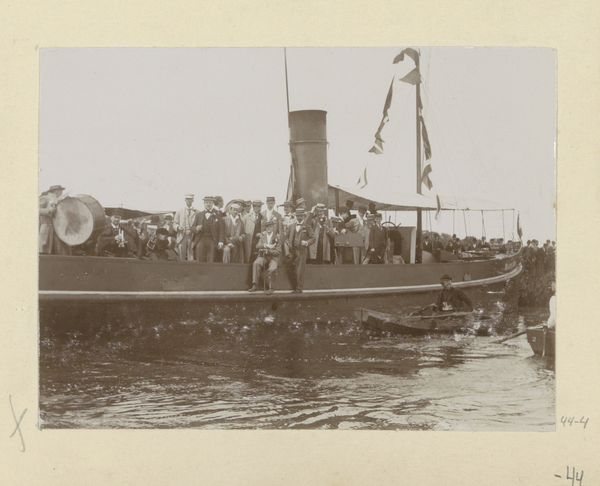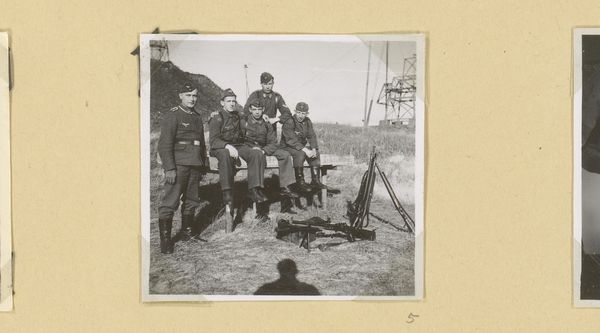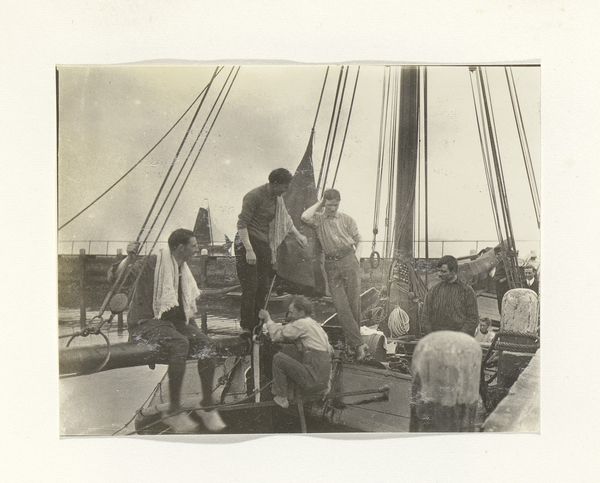
photography, gelatin-silver-print
#
portrait
#
social-realism
#
photography
#
group-portraits
#
gelatin-silver-print
#
history-painting
#
modernism
#
realism
Dimensions: height 63 mm, width 87 mm
Copyright: Rijks Museum: Open Domain
Curator: This gelatin-silver print, titled "Militairen aan boord van een schip," depicts a group of servicemen onboard a ship and dates from 1941 to 1945. Editor: It has a stark, almost bleak quality, doesn’t it? The contrast is sharp, the grays feel very dominant. It gives a strong sense of being on the water in difficult conditions. Curator: Absolutely. Thinking about the historical context, the photographic materials available during that time period directly shaped this aesthetic. Gelatin silver prints were the standard, influencing the monochromatic representation of conflict and military life we often see. Editor: And considering that, it makes me wonder about the hands involved in the production. Were these press photographers documenting the war effort, or were these images intended as propaganda, filtered through official channels before being disseminated to the public? How did those intended uses affect photographic practices at the time? Curator: That's a great point. We know the image resides in the Rijksmuseum, and understanding how museums themselves collect and categorize wartime images like these also tells a larger story. The politics of preservation and interpretation significantly shape how we view these moments. Editor: Precisely. Looking at the sailors themselves, their postures seem simultaneously rigid and relaxed. Is it performative—a show of strength—or is there a degree of casualness to the photograph? How aware were these men of being photographed? Curator: That sense of performance you mentioned really hits on something crucial about the intersection of history, propaganda, and identity formation. To view these sailors outside the wider picture of a militarised society may mean misreading the symbolism entirely. It becomes essential to consider their uniform, and, in consequence, the factories which manufactured it; to note that this represents labour and mass production for war. Editor: Thinking about all of that informs how we look at its impact as social realism, I suppose. It's a scene that, while seemingly simple, opens up these considerations. Curator: Indeed. An ordinary process in a specific setting carries a great burden of symbolism about war. Editor: This glimpse into the past underscores how the seemingly simple documentation involves complex choices about display, dissemination and viewing—for all of us.
Comments
No comments
Be the first to comment and join the conversation on the ultimate creative platform.
